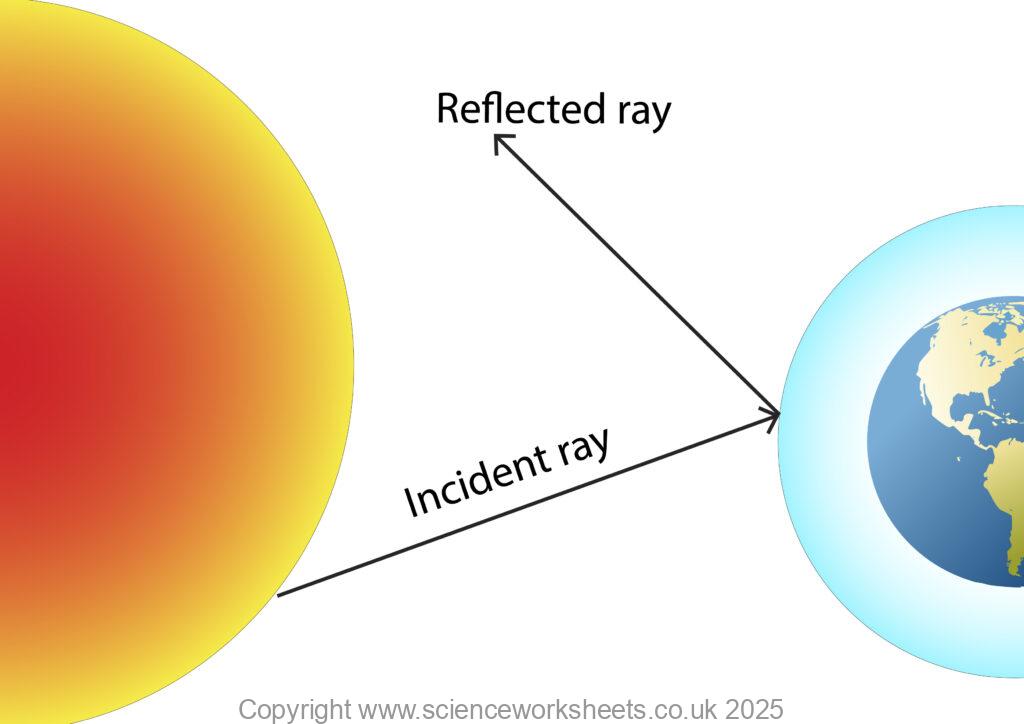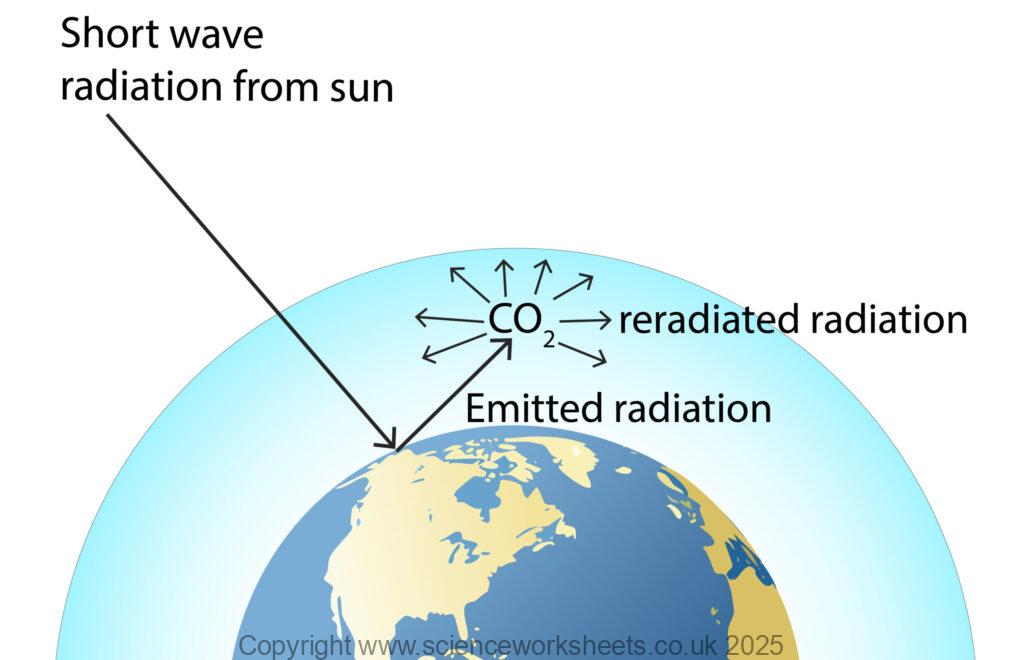AQA GCSE Temperature of the Earth(Physics)
Temperature of the Earth
The temperature of the Earth is controlled by many factors. Some of these factors are listed below:
1.The rate of absorption of incident radiation
2. The rate of emission of radiation from the Earth
3. The rate of reflection of radiation into space
Lets look at these in more detail
Reflection of radiation.
In the diagram below the radiation that is emitted from the Sun, is being reflected from the surface of the Earth’s atmosphere. So, this radiation does not contribute to warming of the Earth.

Some of the radiation that is emitted from the Sun will enter the Earth’s atmosphere. This will be explored next.
Rate of absorption and emission of radiation.
Short wave (high energy) radiation from the Sun will enter the Earth’s atmosphere and strike the surface of the Earth.
The Earth will absorb some of the energy of the radiation and emit back long wave (lower energy) infrared.
Greenhouse gases in the atmosphere such as carbon dioxide will absorb this infrared and then reradiate it in all directions. This traps the energy within the Earth’s atmosphere.

If the rate of the incident radiation being absorbed by the Earth’s surface is greater than the rate of emission of radiation of the Earth’s surface then the temperature of the Earth’s surface will increase.
If the rate of radiation absorbed by greenhouse gases such as carbon dioxide is greater than the rate of radiation emitted by them, then the temperature of the Earth’s atmosphere increases. This effect is known more commonly as the greenhouse effect and it contributes to global warming.
Emitting radiation from the Earth’s atmosphere to space.
Some of the radiation absorbed by greenhouse gases in the Earth’s atmosphere is emitted back to space.
If the rate of radiation emitted from the greenhouse gases to space is greater than the rate of absorption of radiation by greenhouse gases, then the temperature of the Earth’s atmosphere decreases.
Summary
The key point is to remember that we need to refer to the rate of absorption or the rate of emission.
If an object has a higher rate of absorption than emission its temperature increases
If an object has a higher rate of emission than rate of absorption, then its temperature decreases.
Practice Question
1.State three factors which can affect the temperature of the Earth
2. During the day, the temperature of the Earth’s surface increases. Explain why this occurs.
3. Explain how the greenhouse effect causes the temperature of the Earth’s atmosphere to increase.
Absorption and Emission of EM Radiation
JJ Thomson and Plum pudding model
Ernest Rutherford and the Nuclear Model
Niels Bohr changing the Nuclear Model
Discovering the Proton and Neutron
Measuring radiation from radioactivity
Radiation types and properties
Random nature of radioactive decay
Radioactive contamination or irradiation
Hazards of contamination and irradiation
Studies on the effects of radiation on humans
Different half lives of radioactive isotopes
Nuclear Fission Chain Reaction
Writing nuclear fission equations
Drawing ray diagrams for a concave lens
Drawing Ray Diagram to produce a virtual image for a convex lens
Drawing ray diagram to produce a real image for a convex lens.
Specular and Diffuse Reflection
Seeing Coloured Objects Part 2
Viewing objects through coloured filters
Transparent, Translucent and Opaque